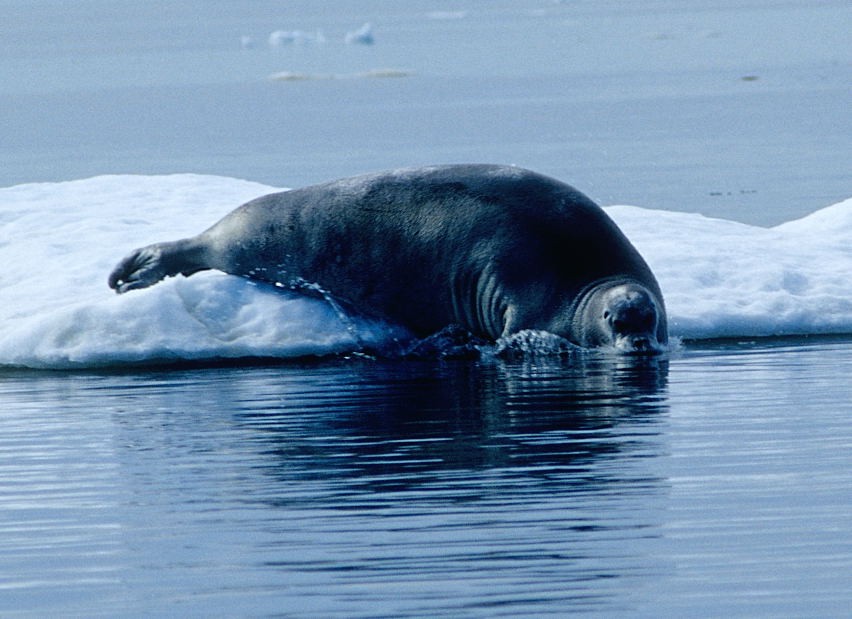Bearded seal
A species of Bearded seal, Also known as Squareflipper Scientific name : Erignathus barbatus Genus : Bearded seal
Bearded seal, A species of Bearded seal
Also known as:
Squareflipper
Scientific name: Erignathus barbatus
Genus: Bearded seal
Content
Description General Info
 Photo By Ansgar Walk , used under CC-BY-SA-3.0 /Cropped and compressed from original
Photo By Ansgar Walk , used under CC-BY-SA-3.0 /Cropped and compressed from original Description
Distinguishing features of this earless seal include square fore flippers and thick bristles on its muzzle. Adults are greyish-brown in colour, darker on the back; rarely with a few faint spots on the back or dark spots on the sides. Occasionally the face and neck are reddish brown. Bearded seal pups are born with a greyish-brown natal fur with scattered patches of white on the back and head. The bearded seal is unique in the subfamily Phocinae in having two pairs of teats, a feature it shares with monk seals. Bearded seals reach about 2.1 to 2.7 m (6 ft 11 in to 8 ft 10 in) in nose-to-tail length and from 200 to 430 kg (441 to 948 lb) in weight. The female seal is larger than the male, meaning that they are sexually dimorphic. Bearded seals, along with ringed seals, are a major food source for polar bears. They are also an important food source for the Inuit of the Arctic coast. The Inuit language name for the seal is ugjuk (plural: ugjuit) or oogrook or oogruk. The Inuit preferred the ringed seal for food and light; the meat would be eaten and the blubber burnt in the kudlik (stone lamp). The skin of the bearded seal is tougher than regular seal and was used to make shoes, whips, dog sled harnesses, to cover a wooden frame boat, the Umiak and in constructing summer tents known as tupiq. The body fat content of a bearded seal is about 25–40%. 
General Info
Lifespan
15-20 years
Diet
The primary food source of bearded seal is marine vegetation. Specifically, it favors seagrasses and kelps. Its diet is further varied by small invertebrates, obtained while foraging in shallow waters.
Appearance
Bearded seal is a large marine mammal with a bulky body and elongated, square-shaped muzzle. Its skin is thick and wrinkled, appearing brown to grey in color. The animal is notable for its lack of external ear flaps and two tusks protruding downwards from its upper lip in males. Females are similar, but have smaller bodies and shorter tusks. The skin, particularly around the neck and shoulders, may appear blotchy due to scarring from fights.
Behavior
Bearded seal are highly social, often found in large groups which exhibit cooperative behavior during hunting. They are semi-aquatic, spending most of their time foraging in the ocean. Distinctively, they use their uniquely designed, stiff whiskers to detect prey in the water. Territorial disputes are rare, as feeding grounds are vast and plentiful.
Scientific Classification
Phylum
Chordates Class
Mammals Order
Carnivores Family
Earless seals Genus
Bearded seal Species
Bearded seal